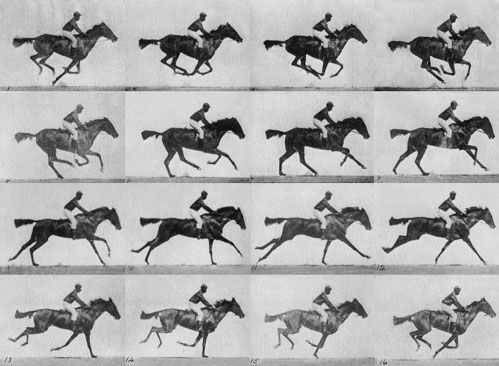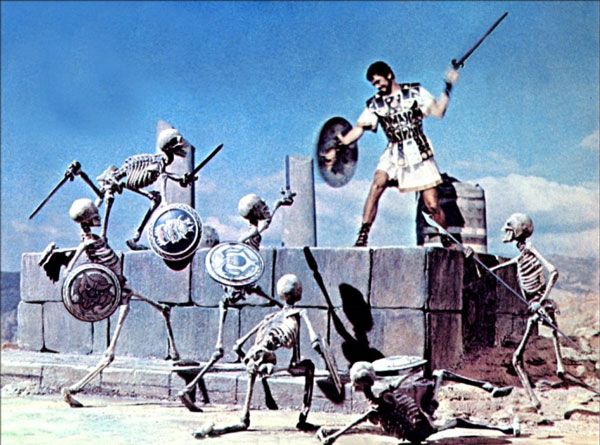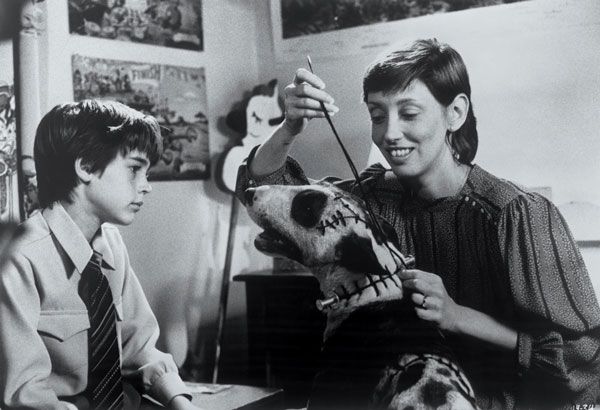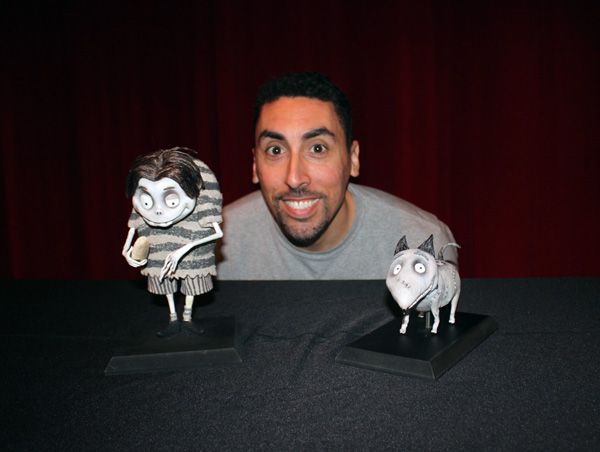On Saturday, March 2, I attended a presentation at The Walt Disney Family Museum titled Bringing Frankenweenie to Life, hosted by legendary Disney Producer Don Hahn. Known for producing new Disney classics like Beauty and the Beast and The Lion King (as well as outstanding documentaries like Waking Sleeping Beauty and Christmas with Walt Disney), Don executive-produced Tim Burton’s Frankenweenie in 2012. Originally a live-action black and white short, Frankenweenie (1984) was reimagined by Burton as a stop-motion animated feature nearly three decades later. Don was on hand not only to talk about that film, but to share a little stop-motion history with us as well.
 |
| Don Hahn delighting the audience - check out the dork in the center, grey shirt Photo courtesy of The Walt Disney Family Museum |
The program began with the image(s) that started it all. In the late 19th century, photographer Eadweard Muybridge was approached by industrialist Leland Stanford with an assignment: to see if a galloping horse was ever completely airborne. Muybridge set up fifty cameras side-by-side along a racetrack, complete with electrically controlled shutters that were connected to a series of tripwires. The end result was the world’s first stop-motion.
 |
| Horse in Motion (1882) |
Next up was a clip from the 1908 film La Maison Ensorcelée. In it, a dinner actually prepares itself through the wonders of stop-motion. Don followed that by showing us an amazing stop-motion piece titled An Optical Poem (1937), composed to Franz Liszt's "Hungarian Rhapsody No. 2." Poem, created by German abstract filmmaker Oskar Fischinger, consisted entirely of paper cutout shapes “dancing” to music. Walt Disney, so impressed with Fischinger’s work, hired him to work at the Disney Studios. Fischinger was a solo artist at heart, however, and only stayed with the Studio for nine months (while there he did work on a little film called Fantasia).
Don then shared his favorite piece of stop-motion animation with the audience: the famous skeleton battle from Jason and the Argonauts. Special effects wizard Ray Harryhausen considers that film his best work. In a 2003 interview with UK’s the guardian, Harryhausen remarked, “I had three men fighting seven skeletons, and each skeleton had five appendages to move in each separate frame of film. This meant at least 35 animation movements, each synchronized to the actors' movements. Some days I was producing less than one second of screen time; in the end the whole sequence took a record four and a half months.”
 |
| The famous Skeleton scene from Jason and the Argonauts Photo courtesy of theargonauts.com |
Another piece that Don is particularly fond of is Dragon, a stop-motion animated commercial for United Airlines by Jamie Caliri. The 60-second spot took many months to complete, and was created using hinged paper puppets in upright miniature sets. They positioned the cutouts, took digital stills, and finished with Adobe After Effects for compositing. It was really good. So good in fact, it won the 2006 Annie Award for Best Animated Television Commercial.
After a few more random clips of stop-motion animation examples, Don began talking about the program’s title film… sort of. He started off with a little history behind the original Frankenweenie (1984). For those who don’t know, its story revolves around a young boy who uses science (and a little lightning) to bring his dead dog back to life. It’s a very good short, but Disney didn’t quite know what to do with it when it was first made. Originally it was planned to be released on the same bill as the 1984 re-release of Pinocchio, but that idea was scrapped when the short upset children in test audiences.
 |
| Frankenweenie (1984) Photo courtesy of herocomplex.latimes.com |
Soon Don moved on to the meat of the program, 2012’s Frankenweenie. The audience was delighted to see many behind-the-scenes photos during the film’s long and meticulous production. Amongst the photos shown were artists building little set pieces, like a tiny etch-a-sketch, or a miniature toaster. The puppets in the film were given actual human hair, each strand individually inserted. The detail that went into virtually every aspect of the on-screen puppets and props is nothing short of astounding. The bicycles built for the characters in the film actually worked; when you turned the pedals the gears moved the rear wheel. One of the largest and most beautiful sets created for Frankenweenie was the pet cemetery. People who worked on the film were asked to submit the names of their favorite pets to fill the headstones.
 |
| On the Frankenweenie (2012) set Photo courtesy of moviename.net |
During the production of a stop-motion feature, the studio keeps a full-time puppet hospital on hand for quick repairs and replacements parts. One of the video clips Don shared with us featured a puppet hospital from Tim Burton’s first stop-motion feature, The Nightmare Before Christmas. In it, we learned that the character of Sally Skellington had a plethora of spare parts ready to go at a moment’s notice, from eyebrows to entire heads. After watching the short video, Don brought out one of the stars of Frankenweenie: the Edgar puppet. His assistant carried it throughout the audience, allowing us to see its great detail up-close. Don then shared a clip from the film that featured Edgar, and said afterward, “That’s the exact same puppet you’re looking at now.” We then watched some time-lapse footage of scenes being filmed, which gave us a sense of just how much work can go into a single shot.
Don wrapped up the program by sharing some really neat photos of his friend, Tim Burton. Apparently Tim actually is “big in Japan,” as evidenced by the picture of the talk show hosts who all dressed up as characters from his films. We also got to see a great picture of Tim on the floor at Comic-Con, signing autographs for kids. The finale of the afternoon came when Don had the star of Frankenweenie brought out, Sparky himself!
 |
| Hangin' with Edgar and Sparky Photo courtesy of The Walt Disney Family Museum |
Don’s presentation blended the perfect amount of humor, insight, and information. Instead of rattling off a list of facts, Don put together a brief history of stop-motion that not only included landmarks in the field, but personal favorites. He was funny, engaging, and went above and beyond by giving out gifts to the occasional audience member! I had the pleasure of interviewing him after the program (the interview will air on The Disney Project Podcast in early April), and his knowledge was only surpassed by his affability. If you ever get the chance to attend a Don Hahn presentation, do not miss it.
 |
| Me with Don Photo courtesy of The Walt Disney Family Museum |
Thank you Don Hahn for the wonderful presentation, as well as the fun post-game interview!
No comments:
Post a Comment